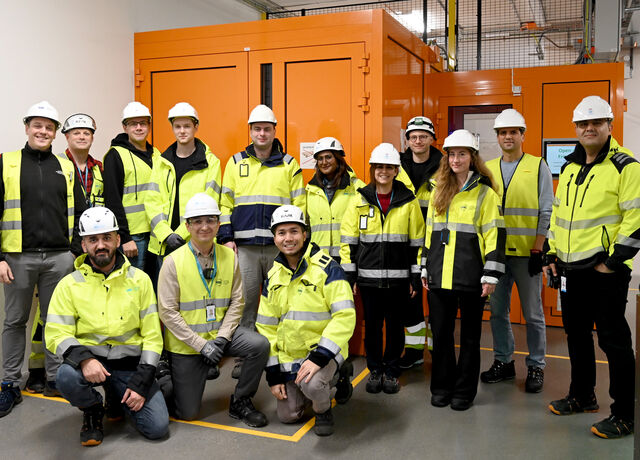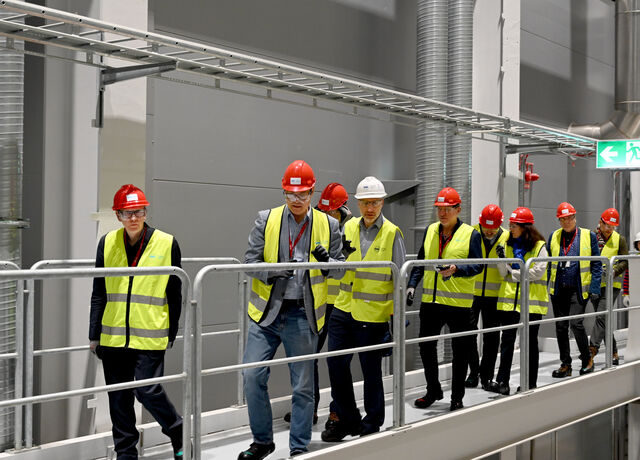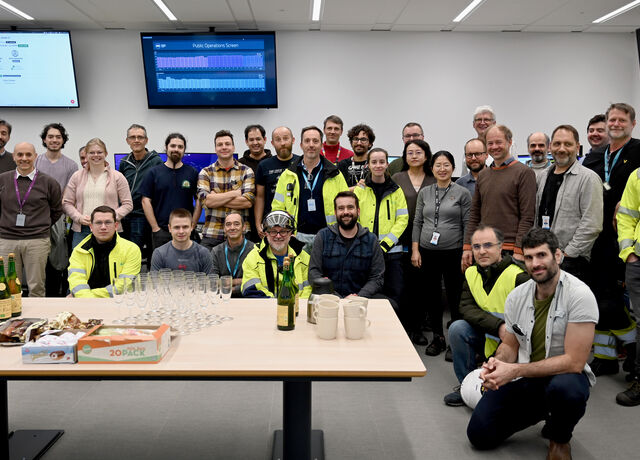How the Accelerator works

-
The ion source produces a proton beam.
Rapidly varying electromagnetic fields heat hydrogen gas in the ion source so that electrons evaporate from the hydrogen molecules. The principle is similar to boiling water in a microwave, however the frequency is considerably higher and the effect is stronger. Hydrogen is the simplest element of nature and consists only of protons and electrons. Therefore, when the electrons have evaporated a plasma of protons remains. -
The proton beam is transported through a Low Energy Beam Transport (LEBT) section to the Radio Frequency Quadrupole (RFQ), where it is bunched and accelerated up to 3.6 MeV.
The protons are guided from the ion source into the accelerator beam line, which consists of beam pipes and accelerating structures, both of which are under vacuum.
-
In the Medium Energy Beam Transport (MEBT) section the transverse and longitudinal beam characteristics are diagnosed and optimised for further acceleration in the Drift Tube Linac (DTL).
There are magnets around the beam pipes in between the accelerating structures to focus and to steer the beam in the right direction. In the accelerator closest to the ion source, where the particles travel at a low speed, it is necessary to simultaneously accelerate and focus the proton beam. -
The first superconducting section consists of 26 double-spoke cavities (SPK) with a geometric beta value of 0.50.
After approximately 50 meters the protons have gained enough speed so they can be accelerated by superconducting cavities. These cavities are cooled by liquid helium to -271 °C.
-
The spoke-cavities are followed by 36 Medium Beta Linac (MBL) cavities with β = 0.67 and 84 High Beta Linac (HBL) elliptical cavities, with β = 0.86.
Accelerating structures, which are distributed all along the linear accelerator and constitute the majority of its length, kick the protons forward by electromagnetic fields. The process can be thought of as a surfer on a sea wave, except for the fact that the electromagnetic waves accelerate with the beam particles, as opposed to sea waves that travel with constant velocity.
-
After acceleration the beam is transported to the target through the High Energy Beam Transport (HEBT) section.
The protons reach 96% of the speed of light before they hit the rotating target wheel. The wheel is 2.6 m in diameter and consists of hundreds of heavy metal Tungsten bricks encased in a disk of stainless steel shielding. The unit weighs 11 tonnes and rotates at 23 1/3 RPMs, about two-thirds the speed of a Heavy Metal LP. The high-speed protons kick out the neutrons in a process known as spallation. It is these neutrons that are directed to the ESS instruments through a gauntlet of media, guides, optics and filters to be used for scientific research.
How the Target works
A basic introduction to the ESS Target Systems





























